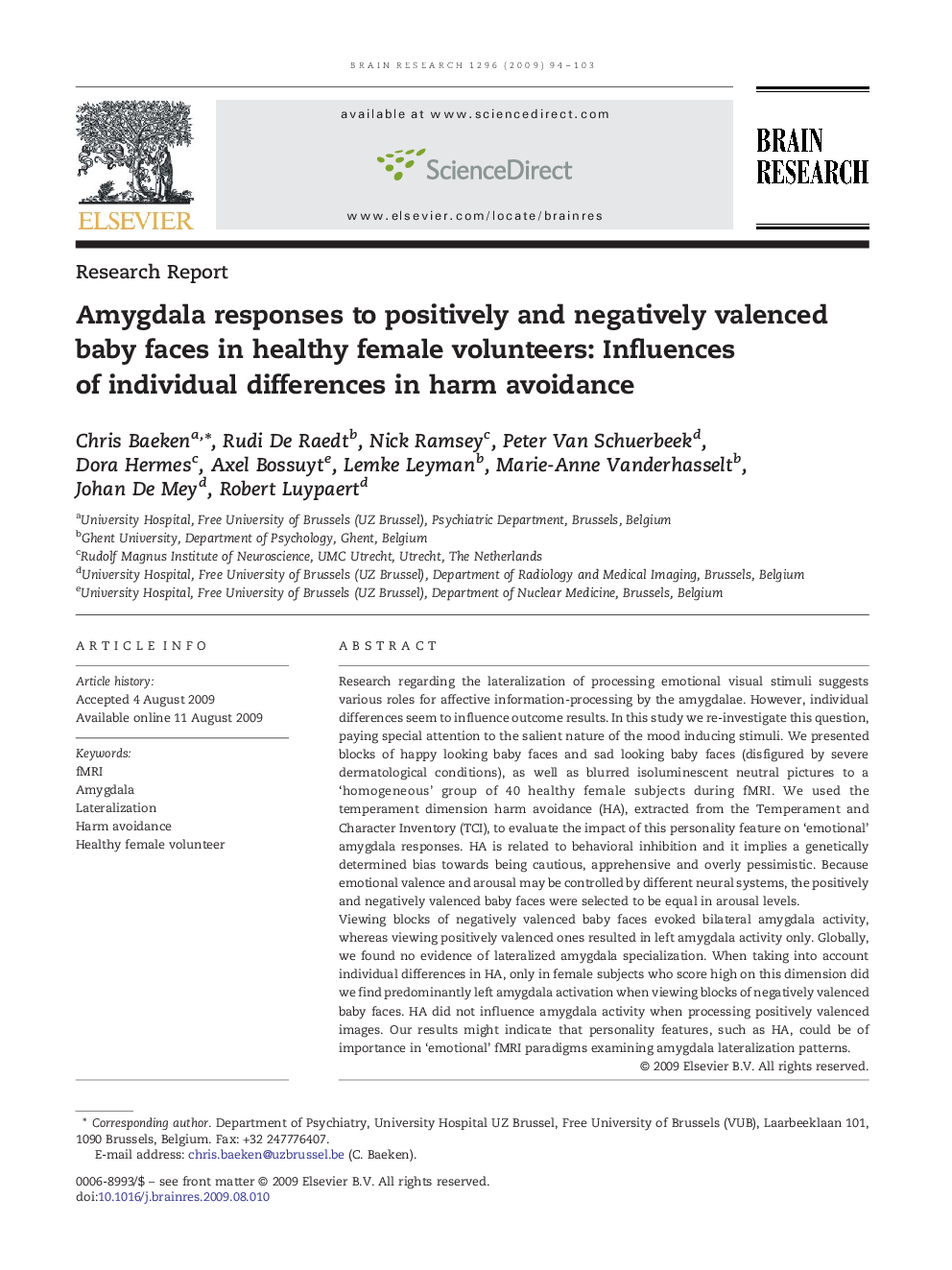| Article ID | Journal | Published Year | Pages | File Type |
|---|---|---|---|---|
| 4327865 | Brain Research | 2009 | 10 Pages |
Research regarding the lateralization of processing emotional visual stimuli suggests various roles for affective information-processing by the amygdalae. However, individual differences seem to influence outcome results. In this study we re-investigate this question, paying special attention to the salient nature of the mood inducing stimuli. We presented blocks of happy looking baby faces and sad looking baby faces (disfigured by severe dermatological conditions), as well as blurred isoluminescent neutral pictures to a ‘homogeneous’ group of 40 healthy female subjects during fMRI. We used the temperament dimension harm avoidance (HA), extracted from the Temperament and Character Inventory (TCI), to evaluate the impact of this personality feature on ‘emotional’ amygdala responses. HA is related to behavioral inhibition and it implies a genetically determined bias towards being cautious, apprehensive and overly pessimistic. Because emotional valence and arousal may be controlled by different neural systems, the positively and negatively valenced baby faces were selected to be equal in arousal levels.Viewing blocks of negatively valenced baby faces evoked bilateral amygdala activity, whereas viewing positively valenced ones resulted in left amygdala activity only. Globally, we found no evidence of lateralized amygdala specialization. When taking into account individual differences in HA, only in female subjects who score high on this dimension did we find predominantly left amygdala activation when viewing blocks of negatively valenced baby faces. HA did not influence amygdala activity when processing positively valenced images. Our results might indicate that personality features, such as HA, could be of importance in ‘emotional’ fMRI paradigms examining amygdala lateralization patterns.
